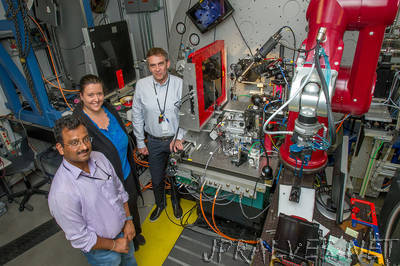
“Researchers from The Hebrew University of Jerusalem, Stony Brook University, and the U.S. Department of Energy’s (DOE) Brookhaven National Laboratory have discovered new effects of an important method for modulating semiconductors. The method, which works by creating open spaces or “vacancies” in a material’s structure, enables scientists to tune the electronic properties of semiconductor nanocrystals (SCNCs)—semiconductor particles that are smaller than 100 nanometers. This finding will advance the development of new technologies like smart windows, which can change opaqueness on demand. Scientists use a technique called “chemical doping” to control the electronic properties of semiconductors. In this process, chemical impurities—atoms from different materials—are added to a semiconductor in order to alter its electrical conductivity. Though it is possible to dope SCNCs, it is very difficult due to their tiny size. The amount of impurities added during chemical doping is so small that in order to dope a nanocrystal properly, no more than a few atoms can be added to the crystal. Nanocrystals also tend to expel impurities, further complicating the doping process. Seeking to control the electronic properties of SCNCs more easily, researchers studied a technique called vacancy formation. In this method, impurities are not added to the semiconductor; instead, vacancies in its structure are formed by oxidation-reduction (redox) reactions, a type of chemical reaction where electrons are transferred between two materials. During this transfer, a type of doping occurs as missing electrons, called holes, become free to move throughout the structure of the crystal, significantly altering the electrical conductivity of the SCNC. “We have also identified size effects in the efficiency of the vacancy formation doping reaction,” said Uri Banin, a nanotechnologist from the Hebrew University of Jerusalem. “Vacancy formation is actually more efficient in larger SCNCs.” In this study, the researchers investigated a redox reaction between copper sulfide nanocrystals (the semiconductor) and iodine, a chemical introduced in order to influence the redox reaction to occur.”
Link to article
